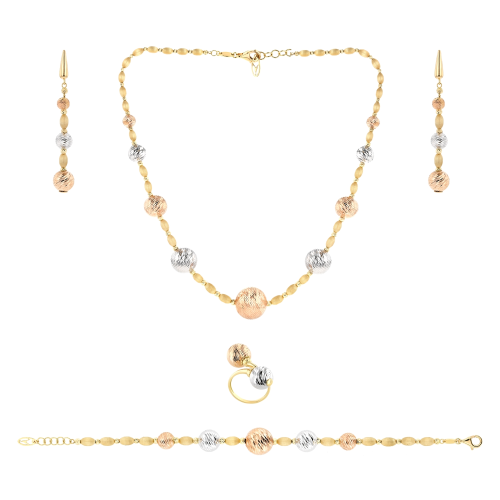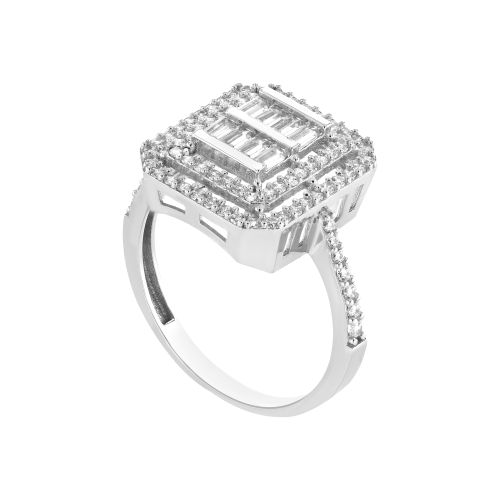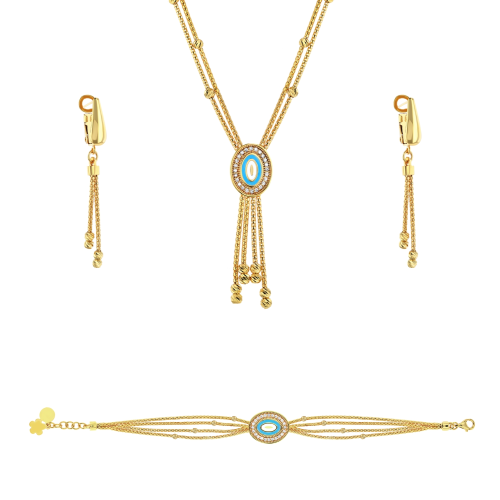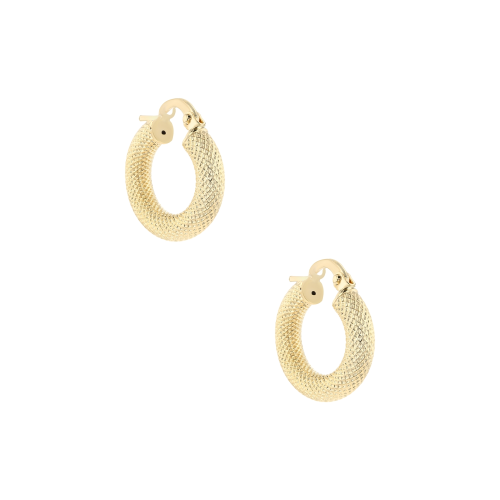Gemstones That Glow in the Dark: The Magic of Fluorescence
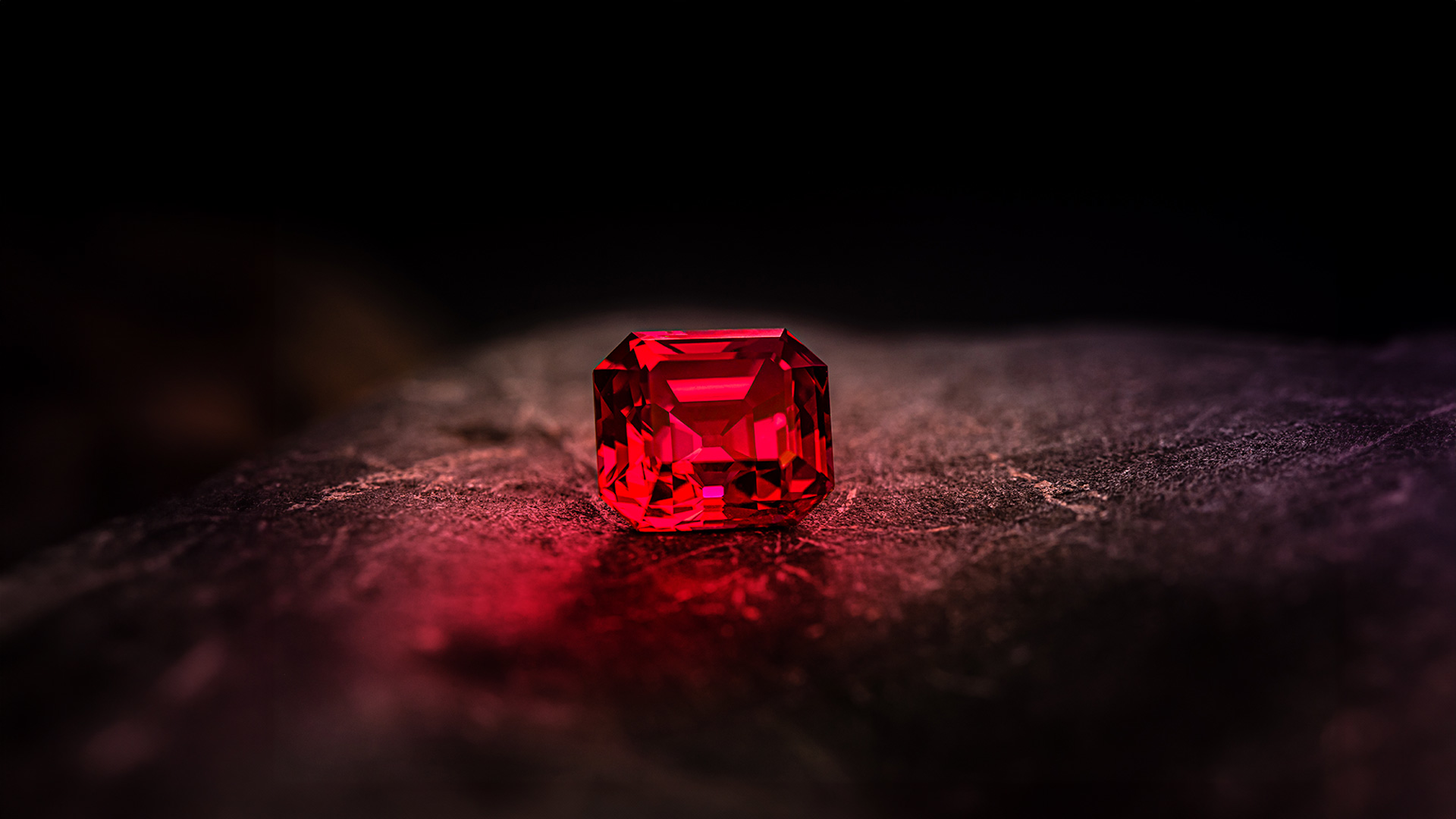
There's something magical about objects that glow in the dark. When the lights dim and certain minerals suddenly illuminate with otherworldly colors, it feels like witnessing a secret language of nature. This phenomenon, known as fluorescence, transforms ordinary-looking rocks and gemstones into spectacular light shows that have captivated gem enthusiasts, collectors, and scientists alike.
What Is Fluorescence?
Fluorescence occurs when certain minerals absorb energy (typically ultraviolet light) and then release it as visible light. This property creates the stunning effect of stones that appear to glow from within. Unlike phosphorescence (which continues to glow after the light source is removed), fluorescence only occurs while the activating light source is present.
The science behind this phenomenon involves electrons within the mineral's atoms. When exposed to UV light, these electrons become temporarily excited and jump to a higher energy level. As they return to their normal state, they release energy in the form of visible light—often in brilliant hues of green, blue, red, or orange that differ dramatically from the stone's appearance in normal lighting.
Famous Fluorescent Gemstones
Diamond
Perhaps surprisingly to many, diamonds are among the most commonly fluorescent gemstones. Approximately 30% of diamonds exhibit some degree of fluorescence, most commonly blue. Under UV light, these diamonds emit a soft blue glow caused by traces of boron in their crystal structure. Some rare diamonds may even fluoresce yellow, green, or red.
For decades, the diamond industry considered fluorescence a defect that decreased a stone's value. Today, however, many collectors specifically seek out highly fluorescent diamonds for their unique character and visual drama.
Ruby and Sapphire
These beloved gems, both varieties of corundum, can display striking fluorescence. Rubies typically glow with a deep red fluorescence that intensifies their already vibrant color. The effect is caused by chromium, the same element responsible for ruby's characteristic red color.
Blue sapphires, interestingly, often show little fluorescence. However, certain sapphires—particularly those from specific localities like Sri Lanka—may glow orange, red, or even purple under UV light.
Fluorite
With a name derived from the Latin word "fluere" (to flow), fluorite was the first mineral in which fluorescence was studied scientifically. In fact, the term "fluorescence" itself comes from this mineral!
Fluorite displays perhaps the most dramatic and varied fluorescent responses of any gemstone. Depending on the specific impurities present, fluorite can glow in vibrant blue, green, purple, yellow, or white. Some specimens even show multiple colors within a single crystal, creating a mesmerizing patchwork effect under UV light.
Calcite
Though not typically considered a gemstone for jewelry, calcite is prized by collectors for its extraordinary fluorescent properties. Most calcite fluoresces in shades of red, orange, or pink due to the presence of manganese activators within its crystal structure.
The contrast between calcite's usually colorless or white appearance in normal light and its intense fluorescence makes it a favorite among mineral collectors and fluorescence enthusiasts.
The Franklin Deposit: Fluorescence Capital of the World
No discussion of fluorescent minerals would be complete without mentioning the legendary Franklin and Sterling Hill mines in New Jersey. This location produced what many consider to be the world's most spectacular fluorescent minerals.
These mines are famous for minerals containing zinc, manganese, and willemite that glow in vivid red, green, and orange under UV light. The combination of different fluorescent minerals in a single specimen creates a spectacular multicolored display that has to be seen to be believed.
The Franklin Mineral Museum maintains a "Fluorescent Room" where visitors can experience these extraordinary glowing minerals firsthand—an essential pilgrimage for anyone fascinated by this phenomenon.
Ultraviolet Light: The Key to Unlocking the Glow
To observe fluorescence, you need an ultraviolet light source. There are three main types of UV light:
- Long-wave UV (365nm): The safest and most common type used by collectors. Many gemstones respond to this wavelength.
- Medium-wave UV (310nm): Less common but reveals fluorescence in some minerals that don't respond to long-wave UV.
- Short-wave UV (254nm): Produces the most dramatic fluorescent effects in many minerals but requires careful handling as it can damage eyes and skin.
Serious collectors often invest in specialized UV lamps that can switch between different wavelengths to reveal the full range of fluorescent responses.
The Science and Mystery of Activators
What causes some stones to fluoresce while others remain dark? The answer lies in trace elements called "activators" that become incorporated into the crystal structure during formation.
Common activators include:
- Manganese (often produces red or orange fluorescence)
- Uranium (typically produces green fluorescence)
- Rare earth elements like europium (can produce various colors)
- Organic materials (usually produce blue or white fluorescence)
Sometimes, the interaction between multiple activators or between activators and the host mineral creates unexpected and spectacular effects that scientists are still working to understand fully.
Collecting and Displaying Fluorescent Gemstones
For those interested in starting their own collection, fluorescent minerals offer an accessible entry point. Many fluorescent specimens are relatively affordable, especially compared to fine gemstones valued for their appearance in normal light.
To display your collection, consider creating a dedicated space with UV lighting that can be easily switched on to reveal the hidden colors of your specimens. Remember that prolonged exposure to UV light can fade some fluorescent minerals over time, so avoid leaving the UV lights on continuously.
Beyond Beauty: Practical Applications
Fluorescence isn't just beautiful—it's useful. Gemologists use fluorescence as an identification tool, as the fluorescent response of a stone can help distinguish between natural and synthetic gems or identify specific varieties.
In mining, portable UV lamps help prospectors locate valuable minerals in the field. Some mining operations even use automated sorting systems that detect fluorescence to separate gem-quality material from waste rock.
Experience the Magic Yourself
While photographs can capture some of the beauty of fluorescent minerals, nothing compares to witnessing this phenomenon in person. Many natural history museums have fluorescent mineral exhibits where visitors can experience the transformation from ordinary-looking rocks to glowing wonders.
Alternatively, consider purchasing an inexpensive UV flashlight and some entry-level fluorescent minerals to begin your exploration of this fascinating aspect of the mineral world.
The magic of fluorescence reminds us that the natural world holds wonders beyond what we can perceive with our unaided senses. Just as the night sky reveals countless stars invisible during daylight, ultraviolet light unveils a hidden universe of color and beauty within seemingly ordinary stones—a secret language of light that has fascinated humanity since we first discovered this remarkable phenomenon.

Our Promise
Fast shipping
Receive your jewelry in maximum 3 days.
Return guaranteed
Requesting a return is quick and easy.
Ethical Sourcing
Ethically Sourced Materials
Payments
Buy in the most convenient way for you.
